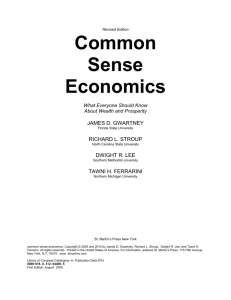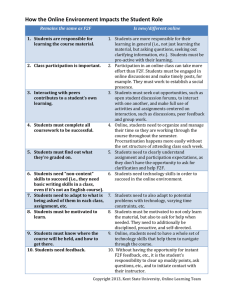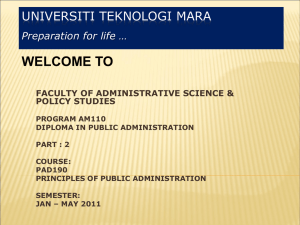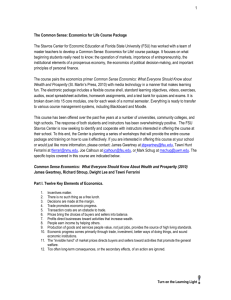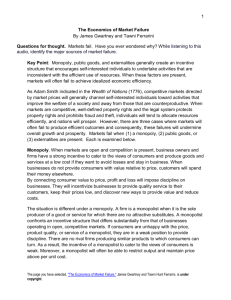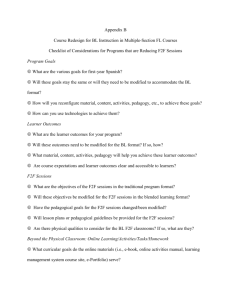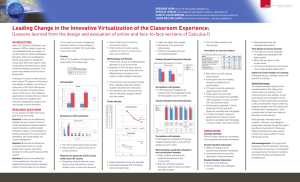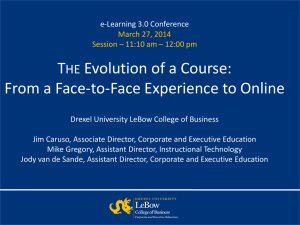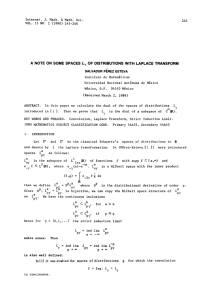Tawni_Ferrarini - Florida State University
advertisement
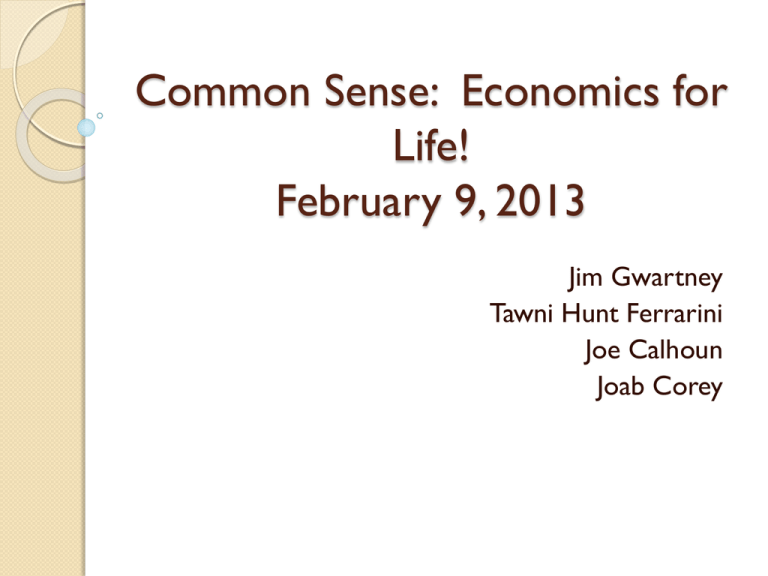
Common Sense: Economics for Life! February 9, 2013 Jim Gwartney Tawni Hunt Ferrarini Joe Calhoun Joab Corey Our Saturday Journey 1. ◦ ◦ ◦ ◦ 2. 3. ◦ ◦ ◦ 9.00 am – Noon: The art of online teaching to the multi-media (M2) generation Overview of CSE Part I Part II Noon – 1 pm Lunch 1.00 – 4.00 pm Part 3 Part 4 Controversies, Supplements and Cooperative Efforts Part I. What? Why? Who? Why online learning to the Multimedia (M2) generation? 1. What is an online or distance learning course? i. What is an online course? ii. Why an online course? iii. How to deliver successful online course to the M2 generation? Define: Course, Online Course and M2 Technology Course: For a defined period, students gain access to class sessions, they interact 3-4 hours per week with the professor and other students, expect 6-8 hours to complete assignments in order to meet course objectives and complete course tasks with purpose. A course is not a course Traditional course [face-to-face (F2F) and established meeting times at a particular site, usually on campus)] Correspondence (asynchronous around the globe/tests included/may or may not align with the traditional academic schedule) Distance learning course Distance learning (same academic schedule as F2F students, distinct syllabus and tests, 50% face-to-face meetings, 50% other) Online (100% anytime learning from any location, alternative section to F2F courses, same syllabus, etc.) Hybrid (some combination of F2F and online) Web-facilitated vs hybrid course A mix of F2F and online meetings Web-facilitated: 1 to 29% of the course is uses web-based technology to facilitate what is essentially a F2F course. Use a learning management system to post the syllabus and assignments. Hybrid: 30 to 70% of the course blends online and face-to-face delivery. Substantial proportion of the content is delivered online, typically uses online discussions, and typically has a reduced number of F2F meetings. Identify your university’s expectations. The cost savings can be huge! Why deliver an online course? Babson Survey Research Group. 2012. “Changing Course: Ten Years of Tracking Online Education in the United States.” Retrieved from the WWW on January 12, 2013 at: http://sloanconsortium.org/publications/su rvey/changing_course_2012 2012 Survey Highlights: 2800 responses “Over 6.7 million students were taking at least one online course during the fall 2011 term, an increase of 570,000 students over the previous year.” “32% of higher education students now take at least one course online.” Continue “77% percent of academic leaders rate the learning outcomes in online education as the same or superior to those in faceto-face classes.” “The perception of a majority of chief academic officers at all types of institutions is lower retention rates for online courses remain a barrier to the growth of online instruction.” Continue “The proportion of chief academic leaders who say online learning is critical to their long-term strategy is at a new high of 69%. “ “The proportion of chief academic officers who believe their faculty accept the value and legitimacy of online education has not increased – it now stands at only 30.2%.” A successful and effective course Provides evidence of learning effectiveness, retains the majority of students, and quantitatively and qualitatively tracks student progress Access (faculty and student)* 1. 2. a. 3. 4. 5. Accessibility, including federal regulations, available resources, invisible disabilities, and effective practices for student and faculty success Cost effectiveness (scale and scope) Faculty satisfaction and positive peer reviews Student satisfaction and positive course evaluations The Five Pillars of Quality Online Education, The Sloan Consortium, Retrieved from the WWW: http://sloanconsortium.org/5pillars on 1/10/13. Multi-media (M2) generation 1. 2. 3. Who is a member of the M2 generation? Why do they matter? How do we advance their understanding of wealth creation from the perspectives of economics and ethics? Who? According to report “Generation M2: Media in the Lives of 8- to 18-Year-Olds” of the Kaiser Family Foundation retrieved on January 10, 2013 at: http://www.kff.org/entmedia/mh012010pk g.cfm ◦ 8-18 year olds who have nearly 24/7 access to media technology ◦ The mass majority use it recreationally. M2 generation’s recreational choices 3 out of 4 of surveyed 8- to 18-year-olds own MP3 players Almost 7 out of 10 0f them have cell phones Surprisingly, only 3 out of 10 kids have computers in the home. Interestingly they find ways to spend almost 7 ½ hours a day of their recreational time (time outside of the classroom) with some form of technology. When multi-tasking is considered, students spend almost 11 hours with some media content. It should not go without notice that this generation choose to spend a meager 38 minutes with print materials -- a historic low according to the Kaiser report. Why M2 students matter? They are the inputs of faculty, graduate students, colleges, universities and future workforce! If a course is to be successful, it must advance student understanding of ethics and economics and help them effectively apply what they learn inside AND outside the classroom. How to engage them in order to succeed in our courses. 1. Leverage their revealed preferences in our courses. 1. 2. 3. 4. 5. 6. Write pre-thoughts Read Watch Listen Act Post thoughts Additional resource Ferrarini, Tawni and Mateer, Dirk. Forthcoming. “Multi-Media Technology for the Next Generation.” Journal of Private Enterprise. Part II. Strong Beginnings Read Write Watch and listen Act Assess Learn Prepare and continue Part III. Effective Ends Direct assessment: Pre and post survey/test and discussions for the course Pre- and post-module assessments Transition from respond to act Part IV. Common Sense Economics: An Economics for Life Course JAMES GWARTNEY, Florida State University, jdgwartney@fsu.edu TAWNI FERRARINI, Northern Michigan University, tferrari@nmu.edu
